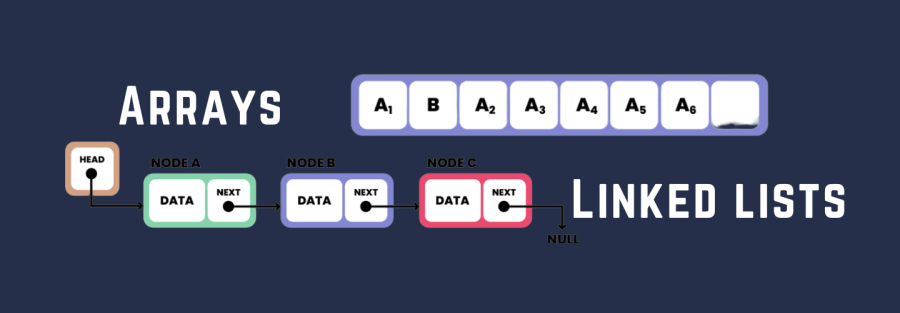A tree is a data structure used in computer science to represent hierarchical relationships between objects. It consists of nodes (or elements) connected by edges, which define the relationships between them. Each node can have zero, one, or multiple child nodes, and the connections between the nodes are referred to as branches…. Read More
Read MoreCategory: Data Structures

Data structures are an essential part of computer science, and they play a critical role in designing efficient algorithms. Two of the most commonly used data structures are arrays and linked lists. While both of these data structures are used to store and manipulate collections of data, they differ in their implementation and functionality. In […]
Read More
Ruby has a built-in linked list class called LinkedList, which is part of the enumerator package. The LinkedList class is a linear data structure that consists of a sequence of nodes, where each node contains a data element and a reference to the next node in the list. Here is an example code to create […]
Read More
In Ruby, a linked list is a data structure that consists of a sequence of nodes. Each node in the list contains a data element and a reference (or pointer) to the next node in the sequence. The first node is called the head of the list, and the last node is called the tail […]
Read MoreSkip lists are a probabilistic data structure that uses multiple levels of linked lists to provide efficient search and insertion operations. Each node in a skip list has multiple forward pointers, allowing for efficient traversal of nodes that are farther away from the current node. Skip lists are designed to improve the efficiency of search […]
Read MoreLinkedList is a linear data structure that is used to store a collection of elements. It is a sequence of nodes, where each node contains an element and a reference to the next node in the sequence. The first node in the sequence is called the head of the list, while the last node is […]
Read MoreA shared pointer is a smart pointer that can manage the lifetime of an object by keeping track of how many pointers are pointing to it. In a doubly linked list, a shared pointer can be used to manage the memory of the nodes. In a doubly linked list, each node has two pointers: a […]
Read MoreLinked list is an important data structure in computer science and programming. Interviewers may ask questions about linked list to assess a candidate’s understanding of the data structure, problem-solving skills, and coding ability. Understanding linked list is important for software development roles that involve designing and implementing data structures and algorithms. It is worth spending […]
Read MoreA doubly linked list is a data structure that allows for bi-directional traversal. It has prev and next pointers for each node, which enables more flexibility in operations like insertion, deletion, and searching. A doubly linked list is a data structure that consists of a sequence of nodes, each of which contains two links, one […]
Read MoreThis article highlights the difference between linked lists and other data structures. Real-life usage of linked list and how it can be implemented in different programming languages. A linked list is a linear data structure consisting of a sequence of nodes, where each node contains a value and a reference (or pointer) to the next […]
Read More
